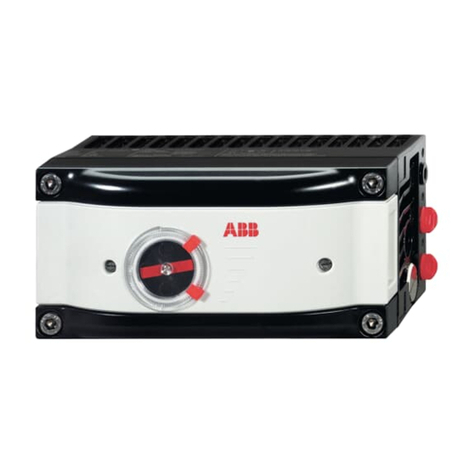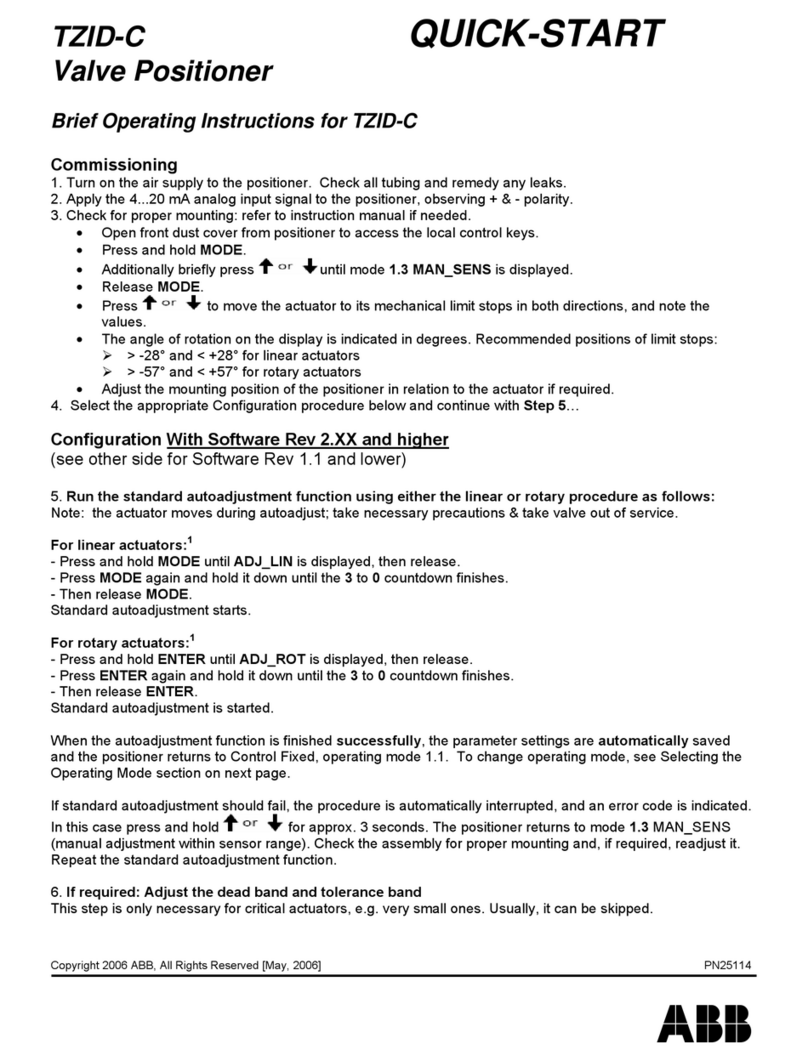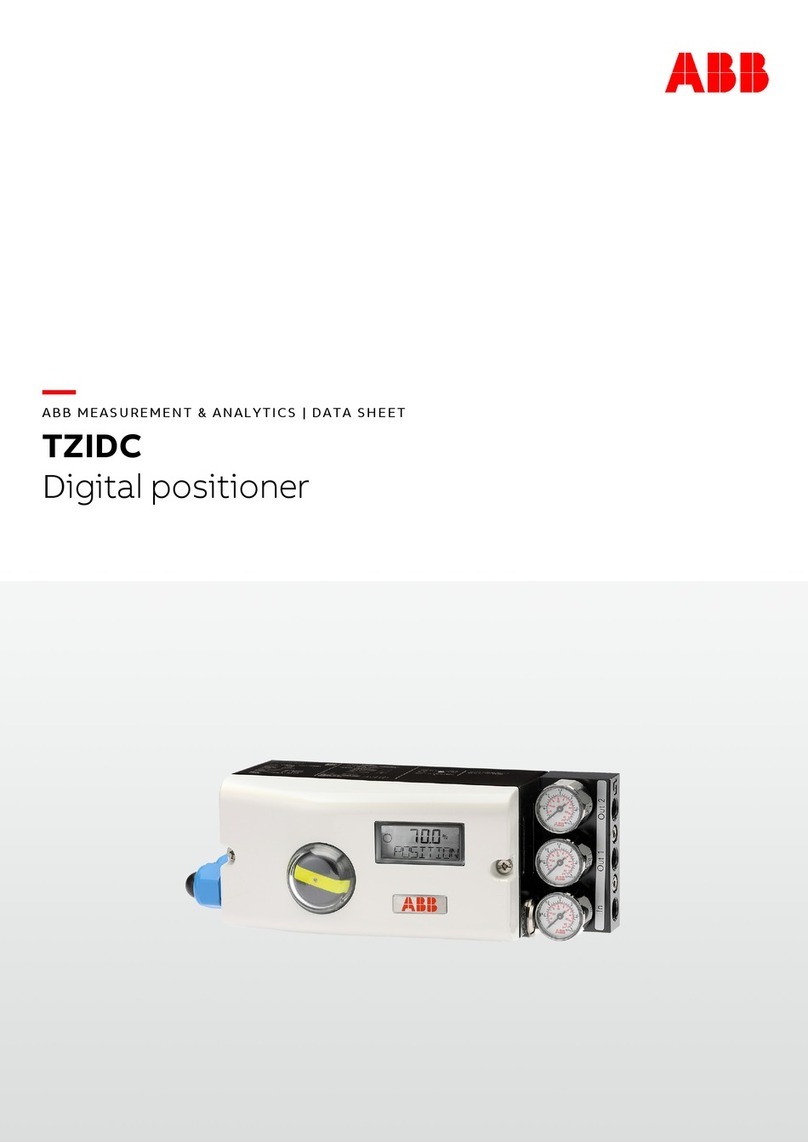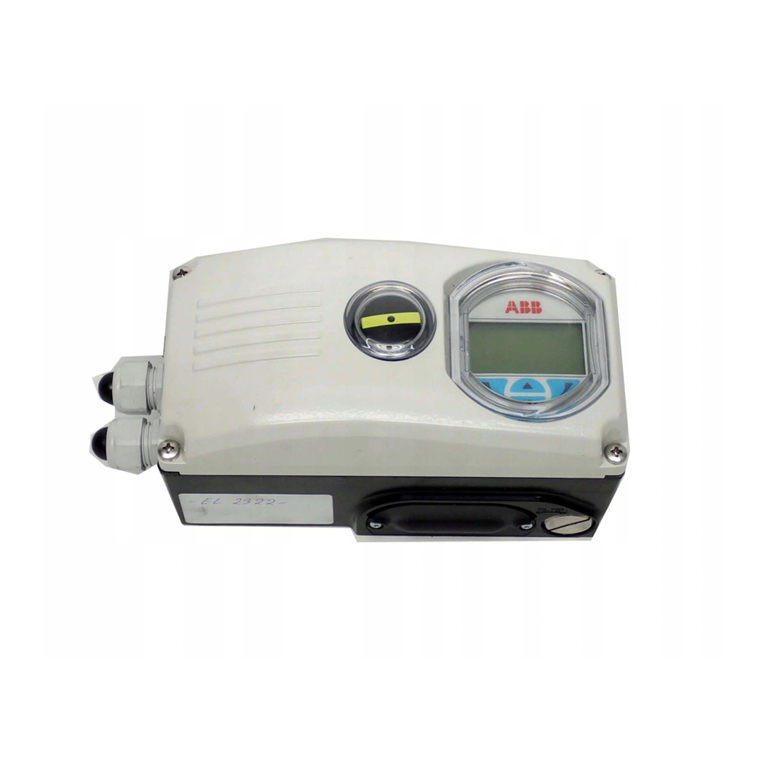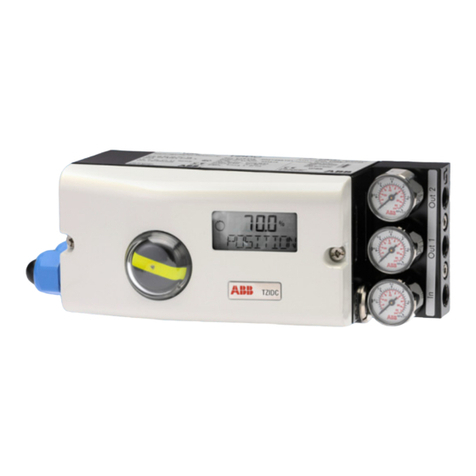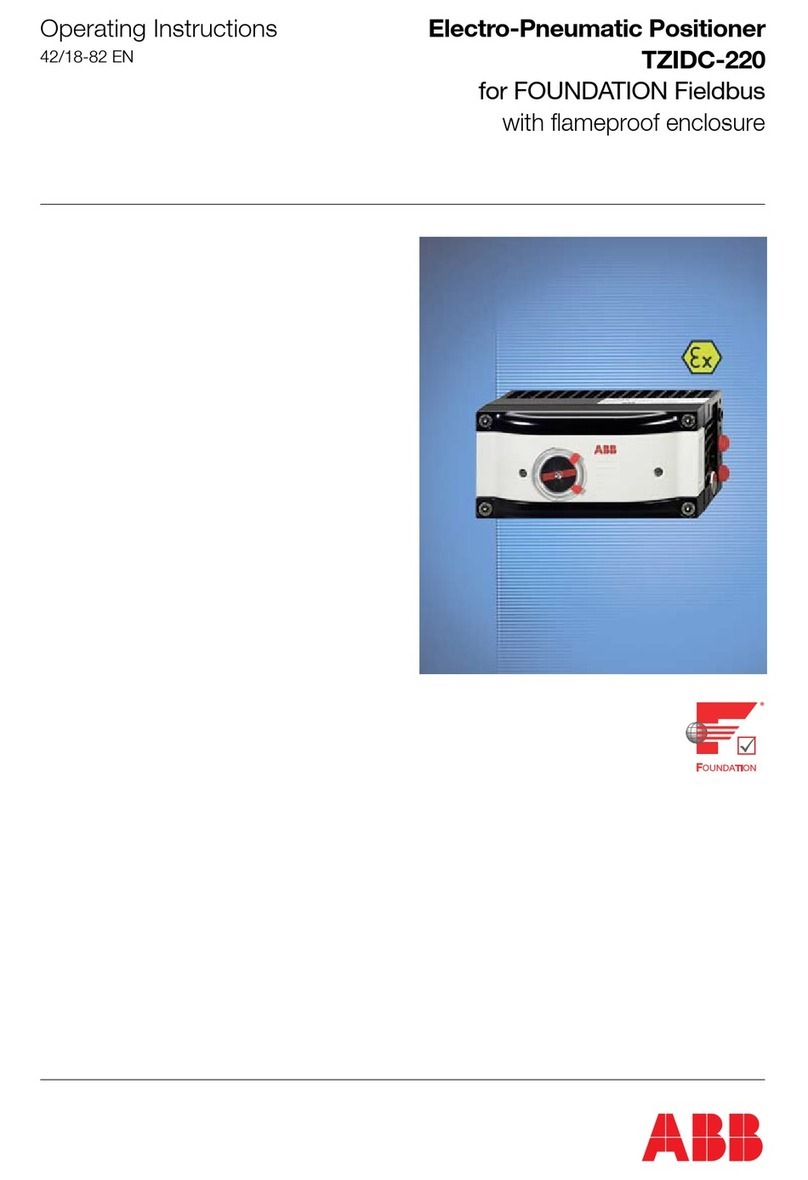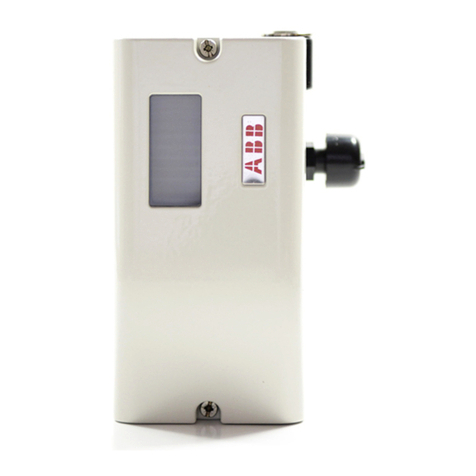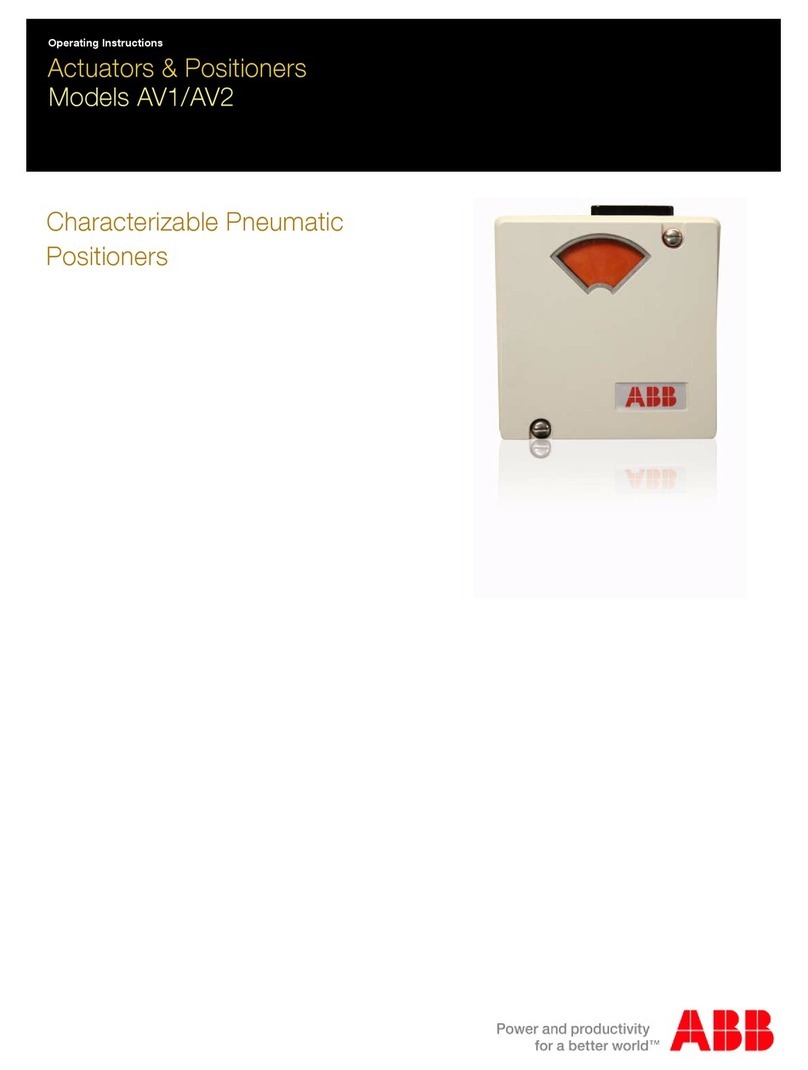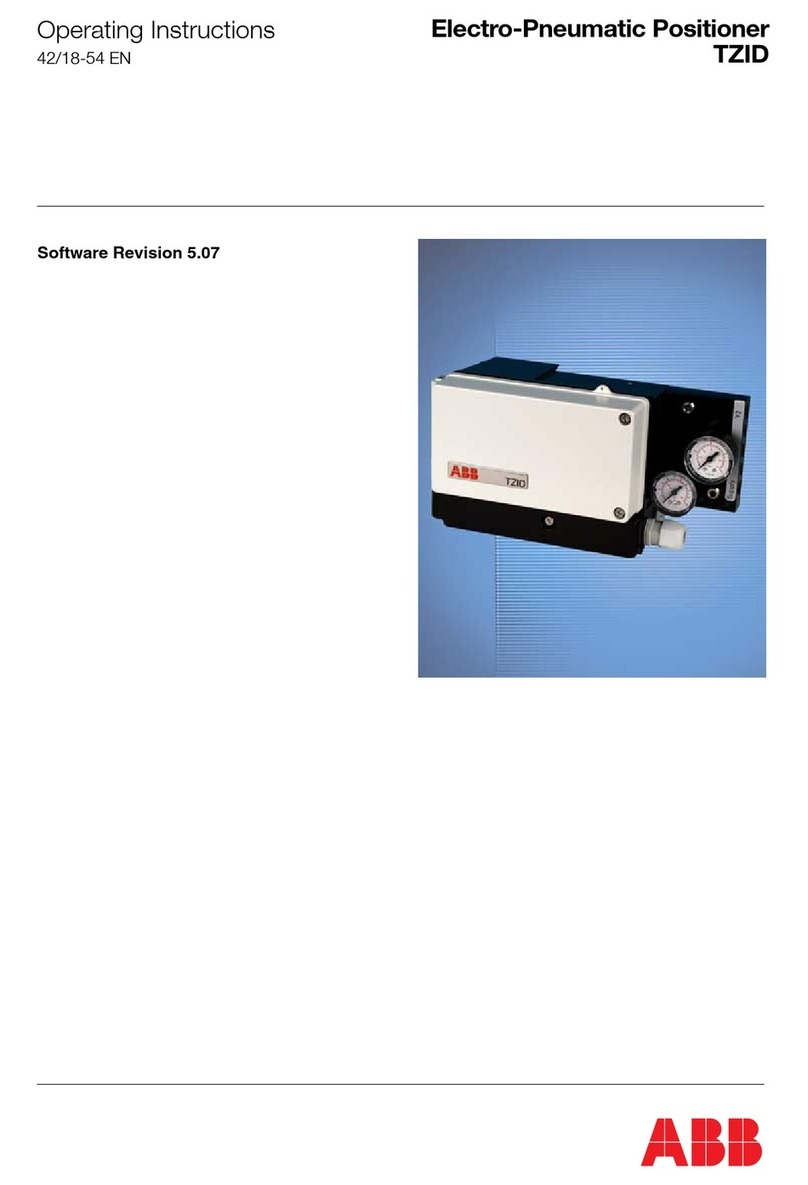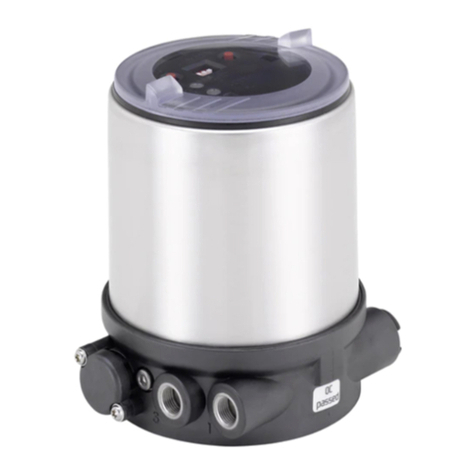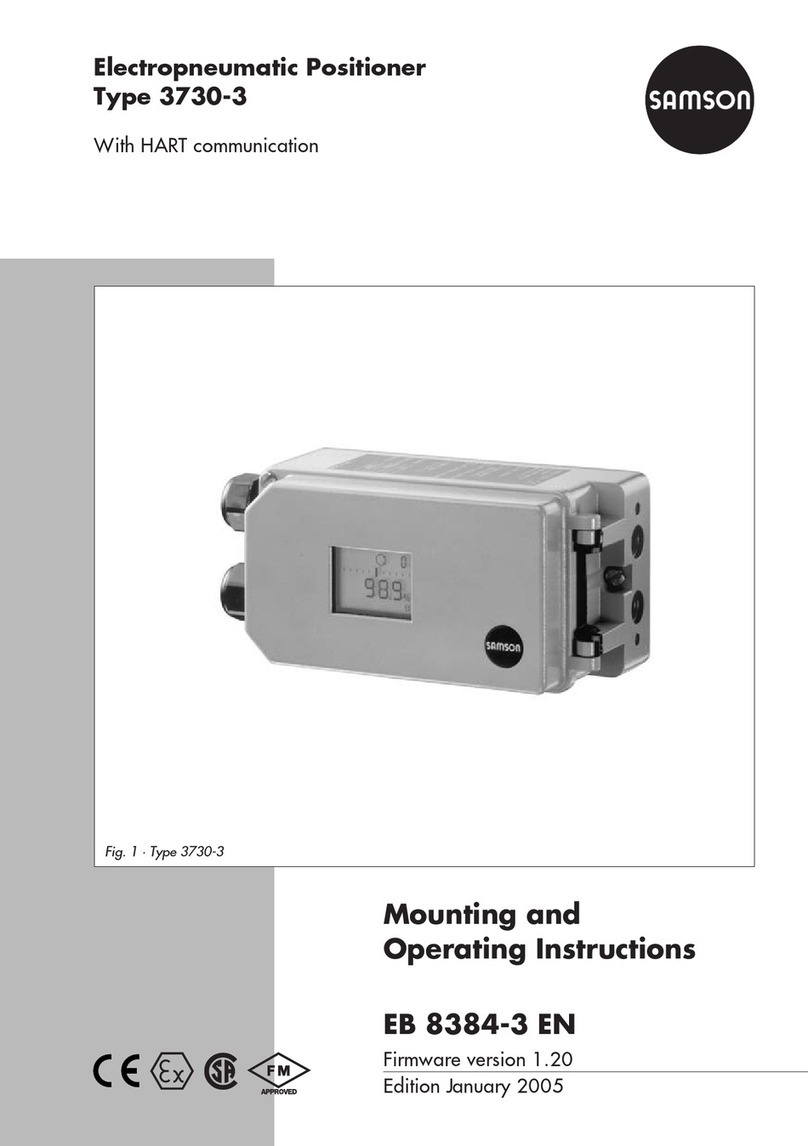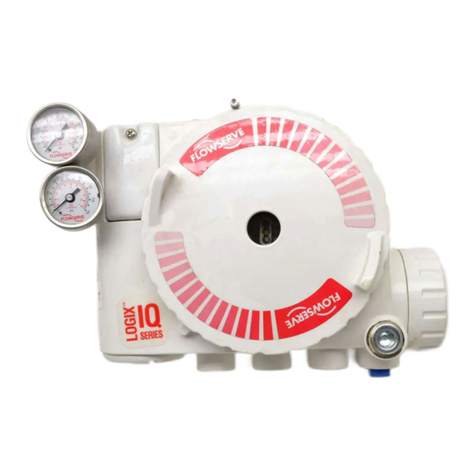
2 TZIDC-200 DIGITAL POSITIONER | OI/TZIDC-200-EN REV. D
Table of contents
1Safety..........................................................................4
General information and instructions..................................4
Warnings....................................................................................4
Intended use .............................................................................4
Improper use.............................................................................4
Cable glands..............................................................................4
Warranty provisions.................................................................4
Cyber security disclaimer .......................................................5
Software downloads ...............................................................5
Manufacturer’s address..........................................................5
Service address.........................................................................5
2Use in potentially explosive atmospheres .............6
General requirements..............................................................6
Explosion protection approvals .......................................6
Standards applied...............................................................6
Product identification .............................................................6
Marking (name plate) .........................................................6
Commissioning, Installation ..................................................7
Notes for operation ................................................................. 7
Use, operation ..........................................................................7
Maintenance, repair.................................................................8
Preconditions for safe operation of the positioner ..........9
Cable gland...........................................................................9
ATEX..........................................................................................10
ATEX Ex d ............................................................................10
ATEX Ex i ............................................................................. 11
IECEx......................................................................................... 12
IECEx Ex d ........................................................................... 12
IECEx Ex i............................................................................. 12
cFMus .......................................................................................14
Ex marking..........................................................................14
Electrical Data....................................................................14
Commissioning, installation ...........................................14
Special conditions for the safe use of intrinsically safe
positioners ......................................................................... 15
Use, operation.................................................................... 15
Maintenance, repair ..........................................................16
Fault elimination................................................................16
Warning markings ............................................................. 17
FM installation drawing No. 901265 ..............................18
EAC TR-CU-012........................................................................23
EAC TR-CU-012 Ex d ..........................................................23
EAC TR-CU-012 Ex i............................................................24
3Design and function ................................................25
Schematic diagram ............................................................... 25
Principle of operation ........................................................... 25
4Product identification............................................ 26
Name plate.............................................................................. 26
5Transport and storage ............................................27
Inspection ............................................................................... 27
Transporting the device ....................................................... 27
Storing the device.................................................................. 27
Ambient conditions.......................................................... 27
Returning devices .................................................................. 27
6Installation................................................................27
Safety instructions ................................................................ 27
Mechanical mounting............................................................ 28
General................................................................................ 28
Mounting on linear actuators ......................................... 29
Mounting on rotary actuator .......................................... 32
Electrical connections........................................................... 33
Safety instructions ........................................................... 33
Positioner / TZIDC-200 Control Unit Electrical
Connection......................................................................... 34
Electrical data for inputs and outputs.......................... 35
Connection on the device................................................ 36
Pneumatic connections........................................................ 38
Safety instructions ........................................................... 38
Information on double acting actuators with spring-
return mechanism............................................................. 38
Notes on ABB pressure gauge blocks ........................... 38
Connection on the device................................................ 39
Air supply............................................................................ 39
7Commissioning ....................................................... 40
Operating modes...................................................................40
Standard automatic adjustment ........................................ 41
Standard automatic adjustment for linear actuators*
.............................................................................................. 41
Standard automatic adjustment for rotary actuators*
.............................................................................................. 41
Sample parameters ............................................................... 41
Setting the mechanical position indication................. 42
Setting for digital mechanical feedback with proximity
switches.............................................................................. 42
Setting for digital mechanical feedback with 24 V-
microswitches ................................................................... 43

